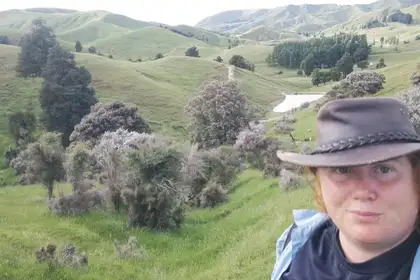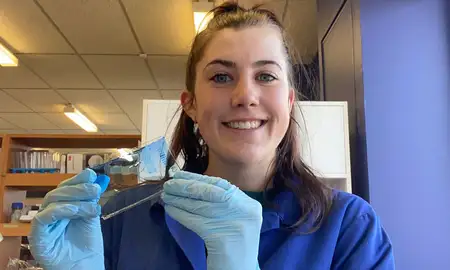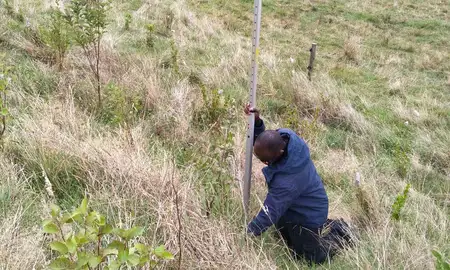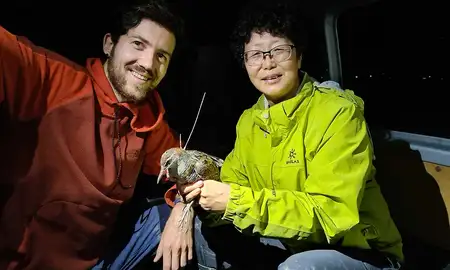
Master's student Sophie Dobson.
A project by Te Kunenga ki Pūrehuroa Massey University master’s student Sophie Dobson and Dr Tom Mackay-Smith at Verdantia Research has revealed that kānuka trees enhanced the number of native birds within a hill country farm landscape.
The project showed that the number of birds (both native and endemic) increased with the density of kānuka trees, but native birds did not favour poplar and willow trees. Fewer native birds were counted in poplar and willow trees when compared to open pastures with no trees.
“An exciting finding was that overall farm bird populations are more biodiverse than previously thought, with populations of native silvereye, grey warbler, pipit and fantail being particularly prominent in the study,” Sophie says.
The native species that benefitted the most from the presence of kānuka were the small insectivorous grey warbler, silvereye and fantail.
Sophie’s main supervisor, Associate Professor Phil Battley, says, “Sophie’s study makes a major contribution to our understanding of how tree species influence the type and number of birds present in hill country landscapes.”

Examples of trees in hill country farm landscapes. Photo credit: Sophie Dobson.
The study was conducted within a large sheep and beef station in the Wairarapa. The farm was chosen for its mixture of readily-accessible low density kānuka, high density native bush, poplar/willow plantings and open pasture habitat types. The following four bird habitats were studied:
- Low density kānuka - growing at densities low enough to allow for pasture growth and sheep and cattle grazing
- High density native bush - mixed native bush consisting of kānuka mixed with a range of other species at a high density which prevented regular grazing due to the density or steep slopes that prevented stock access
- Poplar/willow - growing at densities low enough to allow for pasture growth and sheep and cattle grazing
- Open pasture - open pasture with no trees present to establish a baseline for birdlife on farms if no trees were present.
Sophie completed 333 individual bird surveys, counting a total of 2,726 birds including 542 endemic, 413 native and 1,728 introduced birds. At each site, she conducted five minute bird counts within a 50 metre radius of the sampling position. The behaviour, direction of movement and environmental features of the birds were also recorded.
“The high density kānuka category accounted for the most birds (926), with the open pasture category having the least (388). In total, 30 species were identified, with European starling being present in the greatest numbers,” Sophie says.
Introduced European starlings, chaffinches and yellowhammers all benefitted from the presence of both poplar/willow plantings and kānuka groves. Significant numbers of introduced Eurasian skylark and endemic New Zealand pipit were present on open pasture sites.
Sophie’s co-supervisor, Associate Professor Lucy Burkitt, says, “This work will be instrumental in encouraging the integration of more native trees into hill country landscapes, as the effect on native bird biodiversity is really encouraging.”
Related news
Student secures scholarship to help save native tree from extinction
Taylah Dagg has been recognised for her highly sought-after research on kauri dieback.

Is carbon farming using native shrubs on steep hill country economically feasible?
Sheep and beef farms with erosion-prone hill country or hill country susceptible to dry conditions often have pockets of relativity unproductive or problematic land, with a lower animal carrying capacity than the rest of the farm.

Researcher explores how vulnerable native birds use mangroves
Jacques de Satgé has been invited to be a part of a three-month secondment at the Office of the Prime Minister's Chief Science Advisor with the hopes his research can inform holistic policy around mangrove management.
